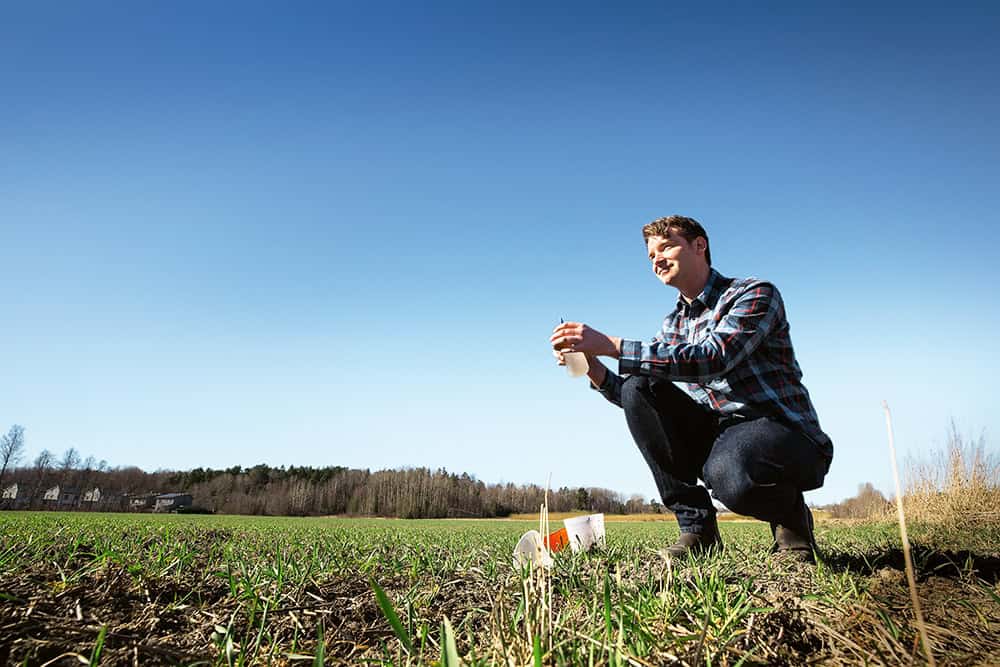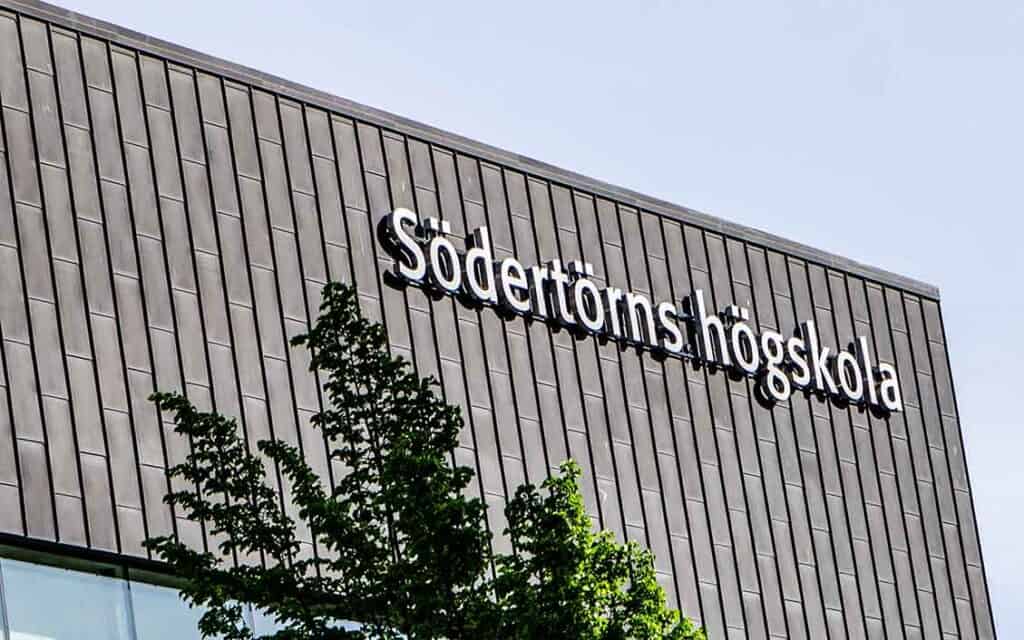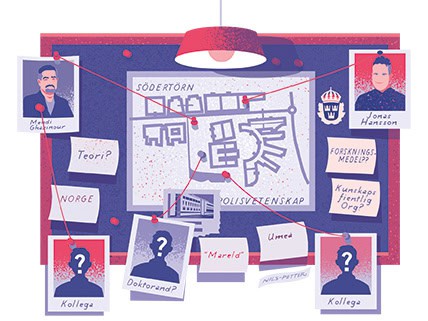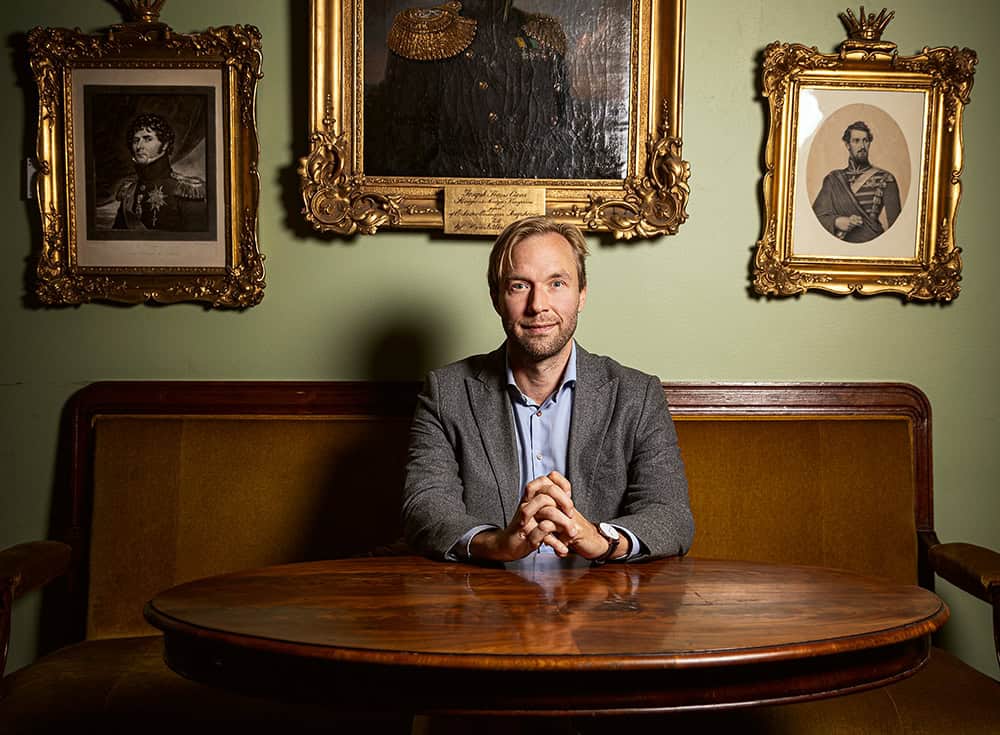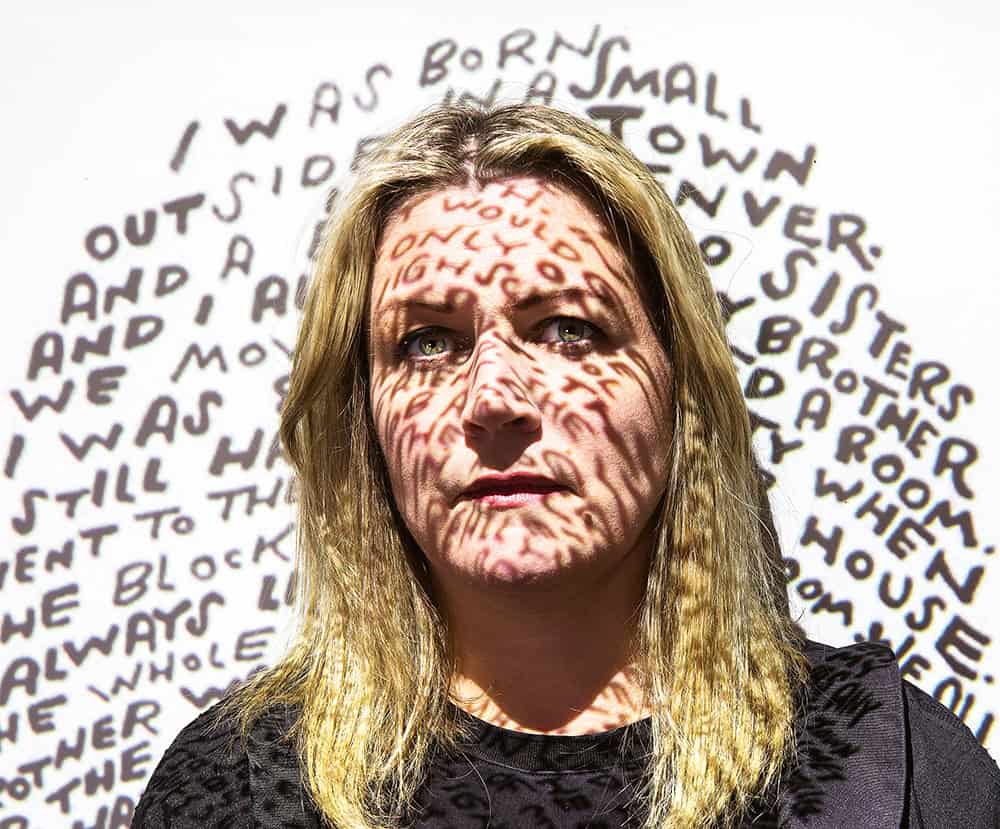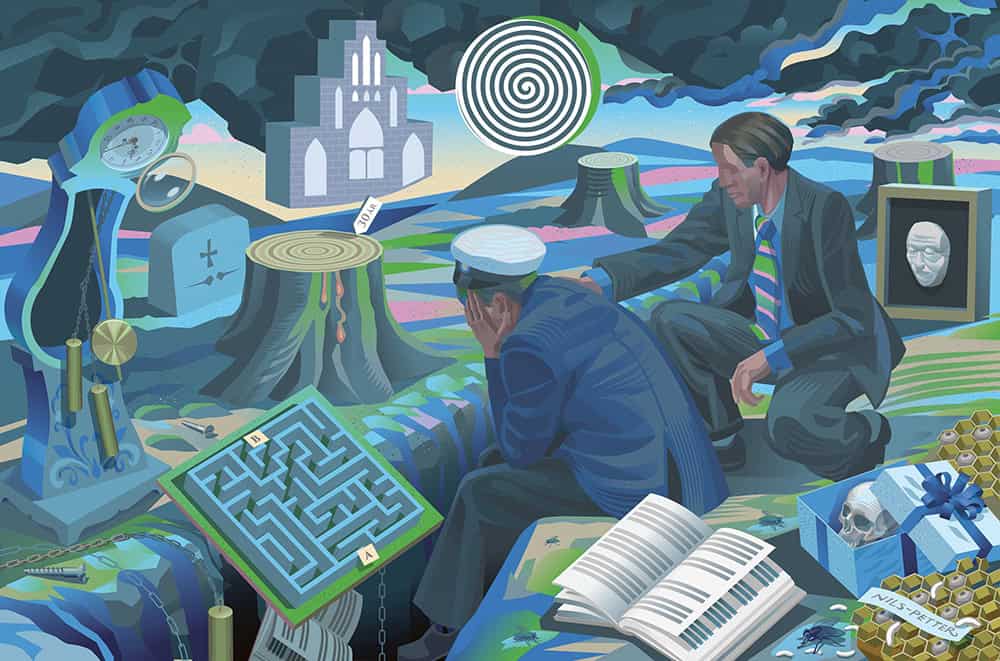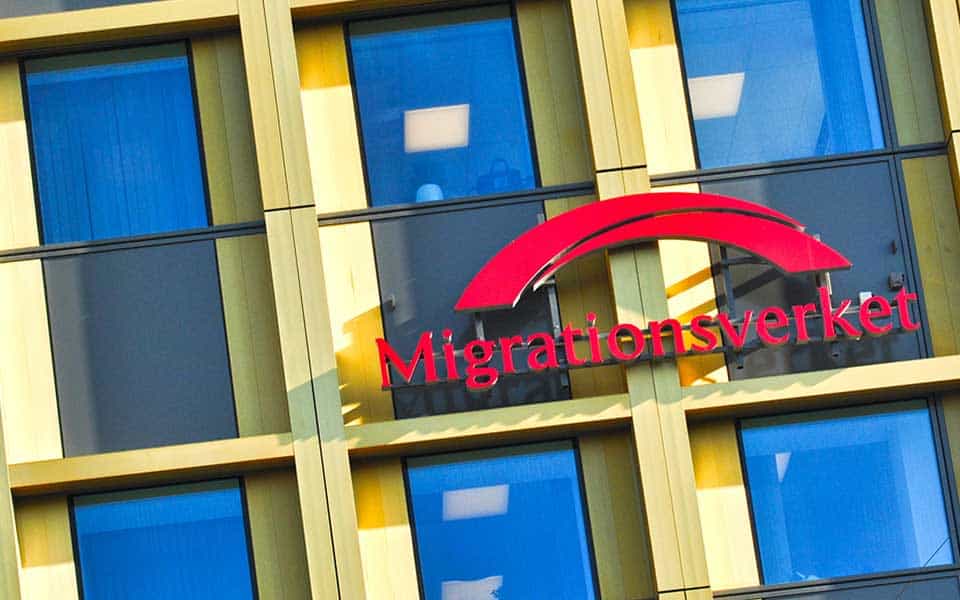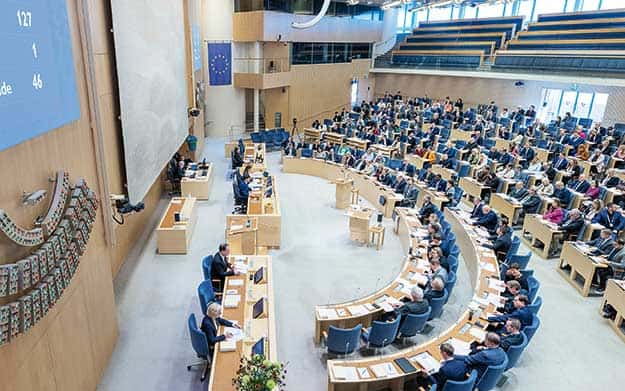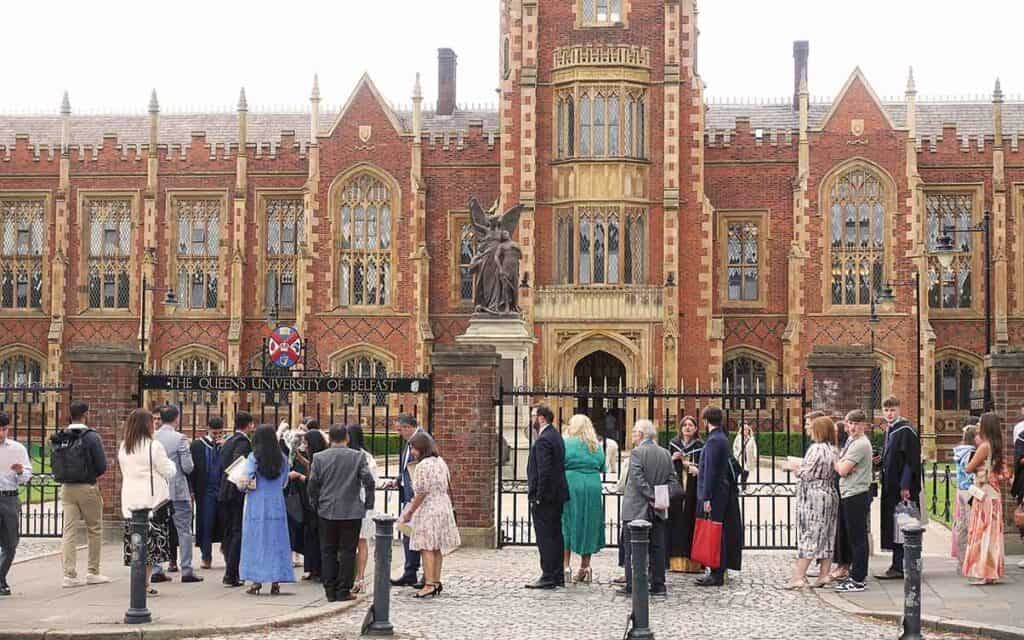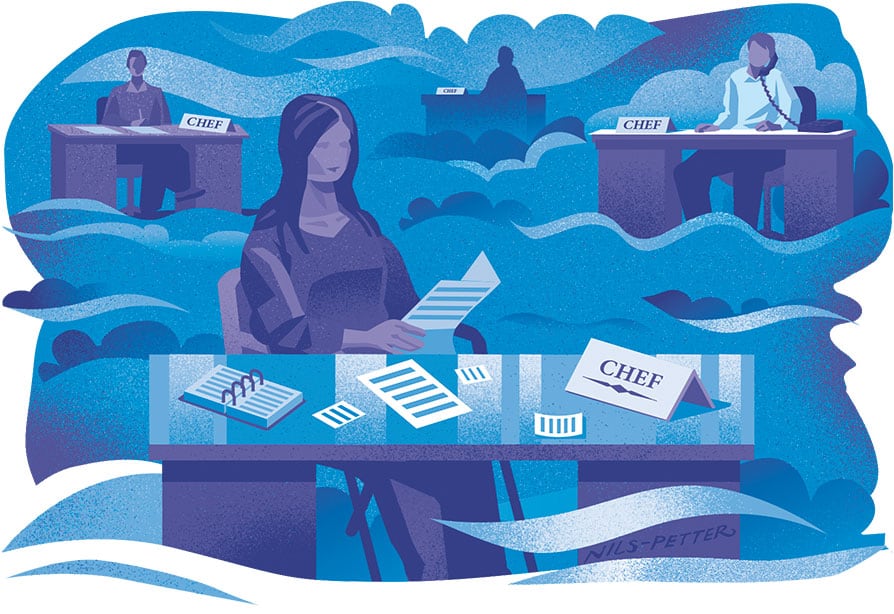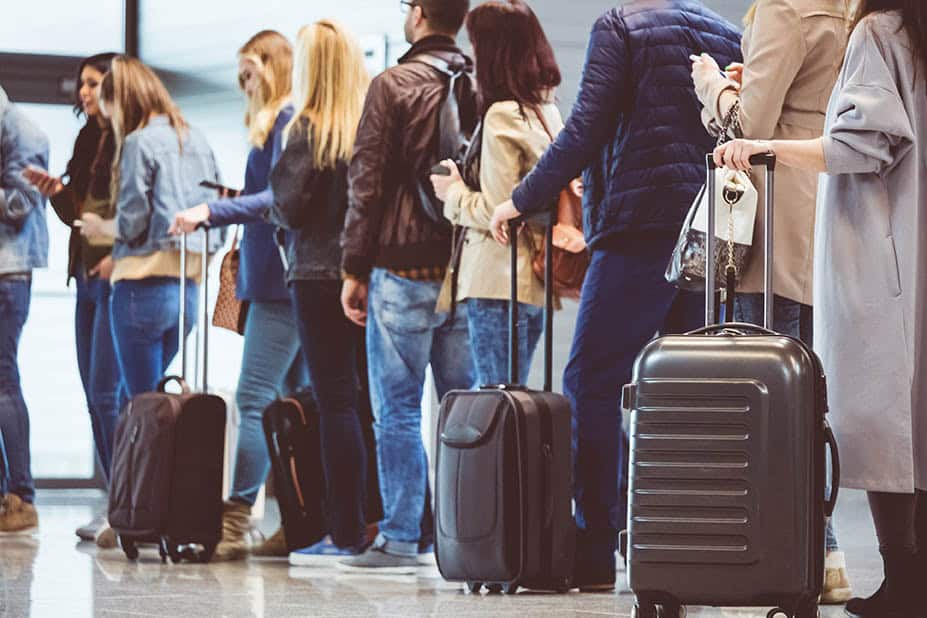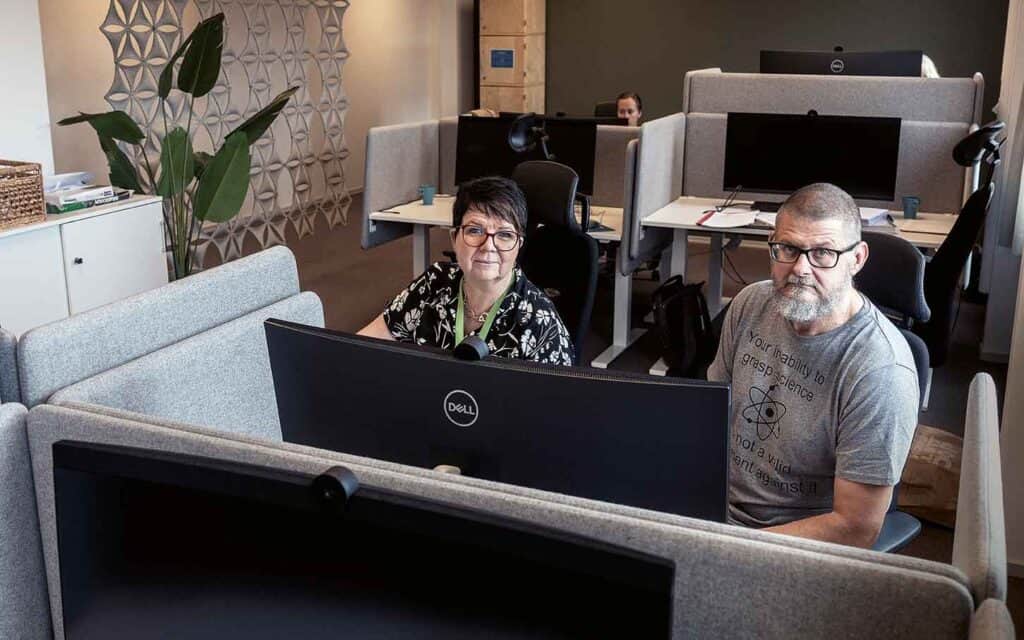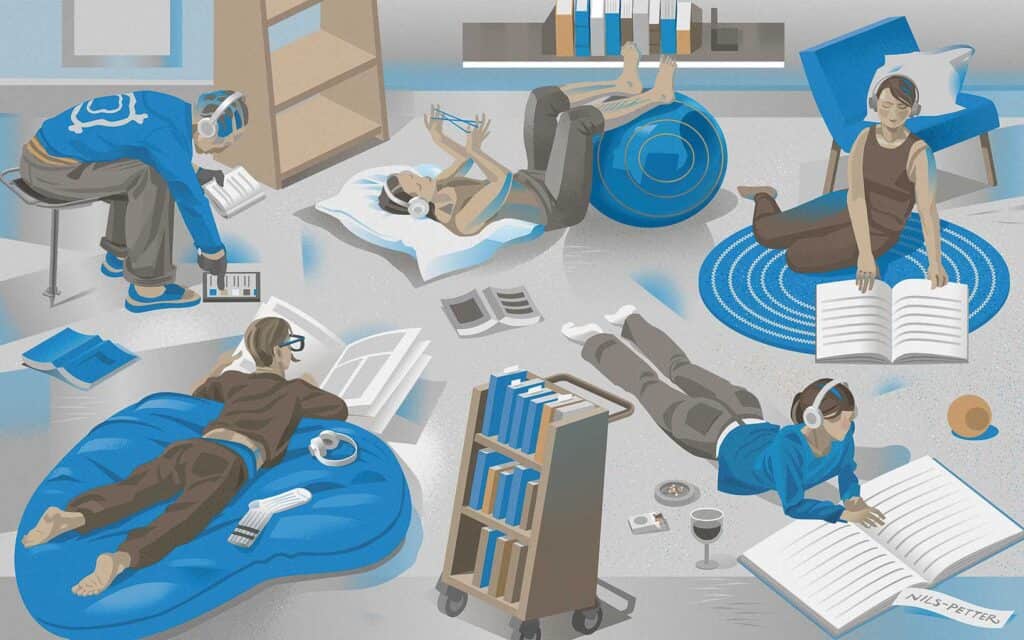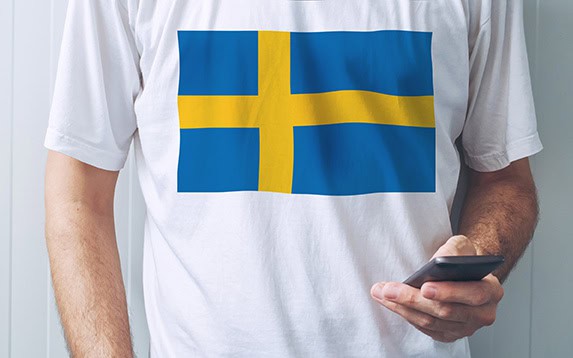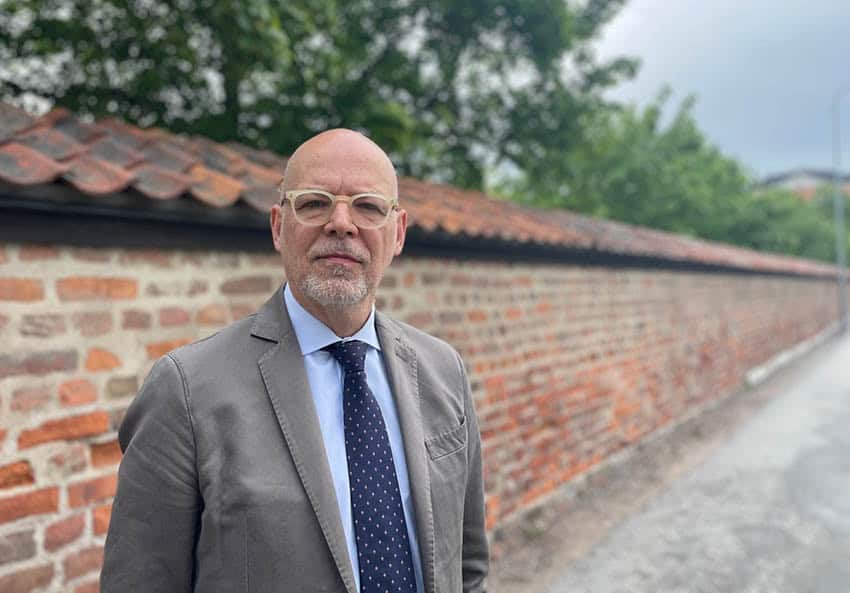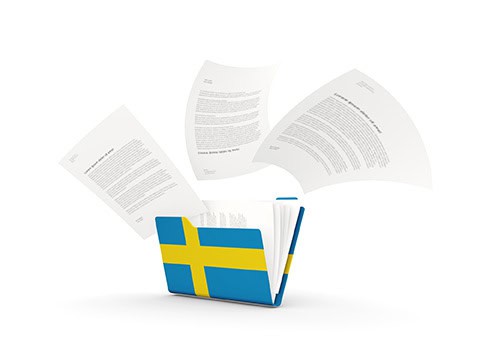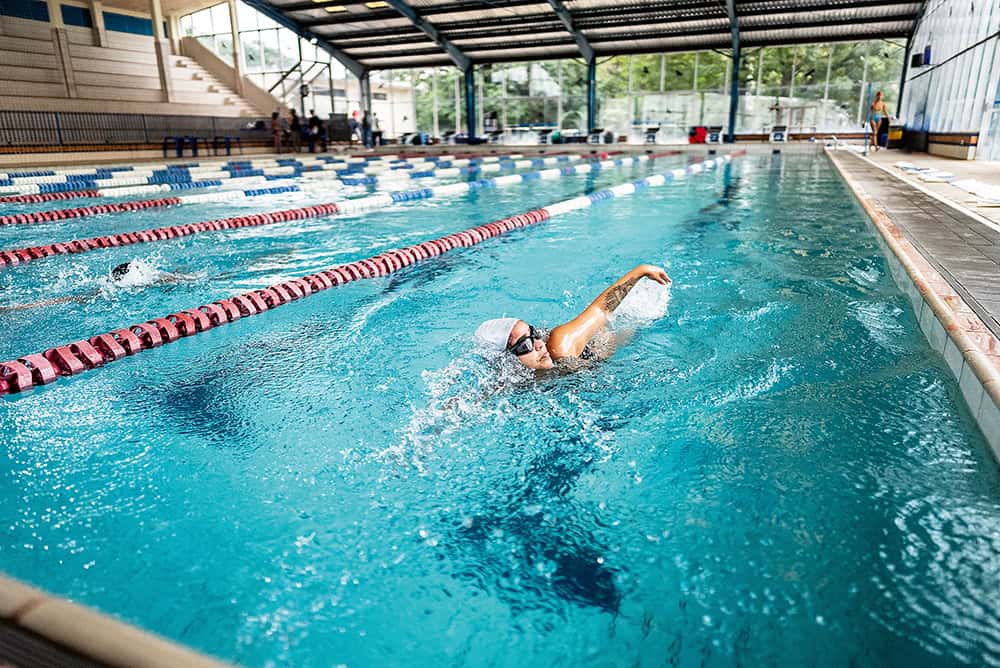There is a queue for the milking robot. A white cow with black patches, named 2278 Donna, is currently standing there, eating extra tasty feed, while the machine rhythmically empties her udders. A display shows the flow from each teat. The one with the highest flow is now being emptied at 1.5 kilos of milk per minute. Based on previous milkings, it is expected to deliver 4 kilos this time. The teat with the lowest rate of flow is expected to produce 3.1 kilos of milk.
When the flow drops to a certain level, the teat cups release automatically. The teats are given a disinfectant shower before 2278 Donna makes way for the brown cow behind her in the queue.
Two technicians are standing at another milking robot in the same barn. They are from the company that manufactures the robot and come out to service it for preventive purposes. In today’s high-tech barns, it is important that the milking machines are always working. There may be several hundred cows on a farm with udders full of milk that need to be emptied up to three times a day. This research barn, run by the Swedish University of Agricultural Sciences (SLU) in Lövsta, outside Uppsala, has almost 300 cows.
So what happens if there is an electrical power outage?
“All dairy farms in Sweden are required by law to have a backup generator. So they start up their diesel-fuelled generators. But those only work as long as there is diesel,” says Sigrid Agenäs, who is dressed in a white overall and shoe covers to ensure that she does not bring in any infections to the curious cows.
Agenäs is a professor of ruminant management at SLU. She also heads the SustAinimal knowledge centre, which last year received funding from Formas, a government research council for sustainable development, to continue its work for another four years.
In the summer of 2020, she and her colleagues were working on sustainability factors for the first round of applications.
“We wondered whether we should we include crisis and war in our application too, or if that would be going too far. In just five years, it has gone from us hoping that no one would think we were crazy for mentioning it to a subject on everyone’s lips.”
That time, four new centres ”for sustainability and competitiveness in the food system” received SEK 48 million each. In 2024, Formas allocated SEK 60 million each to another five new centre initiatives, but by then sustainability had been replaced by crisis preparedness in the heading of the call for proposals.
However, sustainability issues have not gone away just because contingency planning has moved up the political agenda.
“Sustainable agriculture is also agriculture that is well prepared,” says Agenäs.
“The food supply system in Sweden today is set up for abundance, with full access to a worldwide market. There are plenty of potential disruptions that could knock out the system, and we are almost entirely dependent on resources from other countries.”
This is not just about diesel and components for technical equipment. It is also about fertilisers, seeds, pesticides, animal medicines, feed and semen for insemination. Food production that is less dependent on fossil fuels and long-distance transport, and that can better utilise the ecosystem in which it operates, can therefore reinforce both sustainability and preparedness.
The food production system in Sweden is an intricate web of logistics, with the handling or processing of raw materials often taking place in just a few places. For example, the milk tanker comes to milk producers every other day. If it is prevented from doing so, due to fuel shortages, a shortage of drivers or impassable roads, there is no contingency planning for the farms to take care of the milk.
“Then you have to start pouring it away immediately,” says Agenäs. “And it could be huge quantities of milk, because in Sweden we have had a system in which it has been easier for a farm to be economically viable if it is large.”
She also says that food packaging, such as milk cartons, is not kept in stock. Disruptions to those deliveries would also rapidly create problems in the food supply chain.
Together, the centres that received funding from Formas in 2024 cover research on preparedness, sustainability and competitiveness along the entire food chain. Sigrid Agenäs says that the centres enable researchers and actors in the sector to work together to design future sustainable food systems, in a way that is very difficult in ‘normal’ research projects.
“We try to remind people that a method of production that does not exist in good times will not suddenly materialise because there is a civil contingency situation. And this is a very difficult question: How much additional cost or reduced production efficiency can we accept in good times in order to ensure that we have that production when times are tough?”
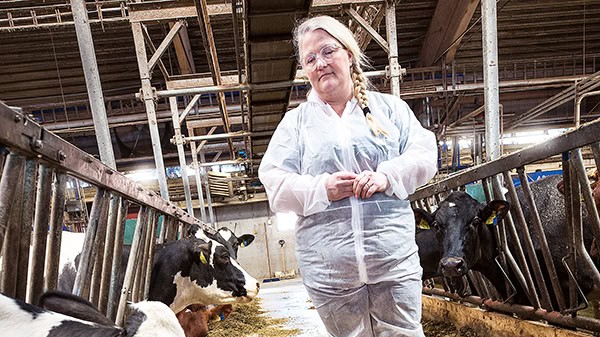
SustAinimal focuses on the role of animals in the system. Some of the research takes place here in the barn outside Uppsala. When cow 2278 Donna leaves the milking robot, she can choose to go to the car wash-like brush for a good scratch or lie down in the resting area. She can also go and eat whenever she wants. Feed troughs hanging on weighing cells and cameras ensure that her feed intake is documented, as is most of what she does here at the research station.
Two kilos of sugar and almost as much protein leave her body with her milk every day, which means she needs to eat a lot. How and where her feed is produced therefore has a major impact on the environment, climate and preparedness. At present, some of the ingredients in concentrated cow feed are imported. One research question is therefore whether it is possible to produce feed with sufficient fat and protein content using only Swedish raw materials and which is not too expensive in relation to what the farmer is paid for the milk.
“A feed that requires less fuel to produce is only good if the cows who eat it give the same amount of milk,” says Agenäs. “The interesting thing is how much of a carbon footprint there is per portion of nutrition for humans.”
The estimated climate impact of milk and meat has contributed to recommendations to eat more plant-based food. At the same time, Agenäs believes that the analysis of the system needs to be broadened to better capture the potential benefits of livestock production.
In Sweden, she says, about half of dairy cows’ feed is made up of residues from crops that are not made into food for humans, such as rape and wheat husks.
“From my perspective, cows convert plants that we cannot get any nutrition from into milk and meat that we can easily absorb in our metabolism.”
The other half of dairy cows’ feed consists of grass and clover. This is grown on arable land where crops for direct human consumption could otherwise grow, and therefore the production could be in competition.
On Swedish arable land, crop rotation is practised, and that includes grassland or ley. Because ley is perennial, unlike the other crops, it can contribute to carbon sequestration in the soil. Agenäs explains that ley can increase the soil’s capacity to retain water and reduce the need for pesticides, as the soil is rested from ploughing. This means that the yield of wheat can be higher when it is grown after ley than after another crop.
Livestock waste could be used to a greater extent than today for biogas and to reduce dependence on imported fertilisers. Expanding natural grazing pastures would not only be important for biodiversity and the pollinators that are essential for crop production, it would also be an important contingency resource.
“Especially if you have sheep grazing. They need almost no resources, they can provide textile fibres and milk while they are alive, and when they are slaughtered, they become both meat and sheepskin. Dairy cows find it difficult to get enough nutrition feeding on natural pasture, but their daughters can do so while growing into cows,” says Agenäs.
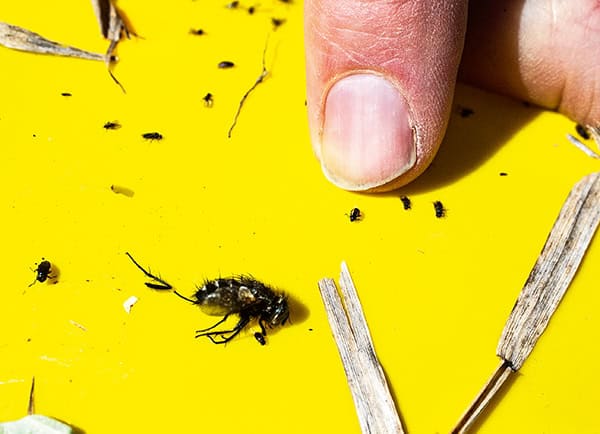
Just over a mile away, in a field outside SLU’s Ultuna campus, the first leaves of wheat glow green against the soil. An insect trap has caught a flea beetle. It is very small, but it can do great damage to spring-sown oilseed rape. The trap also contains some spiders. They can help control pests. Later in the season, there will also be many ground beetles here, and they feed voraciously on aphids that are harmful to wheat.
“If we succeed in understanding these ecosystems, we can to some extent replace imported fertilisers and pesticides with nitrogen-fixing plants and natural enemies of pests,” says Ola Lundin as he empties the insect trap.
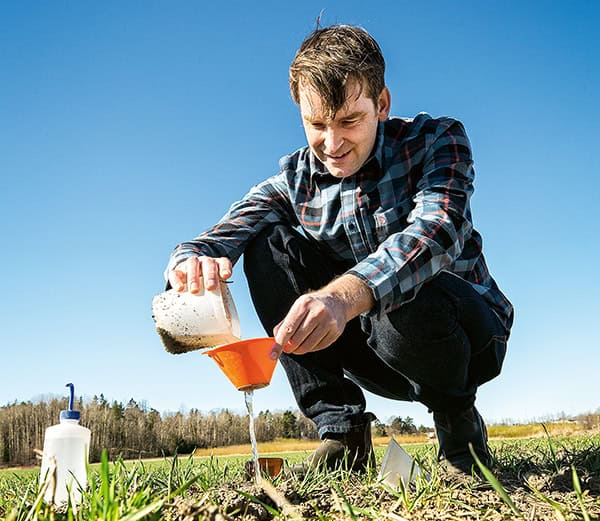
He is a researcher in ecology at SLU and part of the new Center for Food Resilience and Competitiveness (FORCE), led by Lund University. FORCE aims to increase Swedish plant-based food production and works with the entire chain, from plant breeding to turning crops into something appetising on the plate.
Within FORCE, one objective is to develop varieties of broad bean, (also known as fava bean), that can be grown further north than today. Broad beans can be eaten directly by humans or used as animal feed.
While cereals acquire their nitrogen from the soil, legumes can take it from the air. Including broad beans in crop rotation can reduce fertiliser use and improve soil health. Clover is a type of legume that does not only need to be grown for grazing animals, but it can also be grown alongside cereals to reduce weeds, attract pollinators and provide nitrogen to the soil, says Lundin.
“But the legume must not compete with the crop too much, so we need to do more testing to find out which varieties are good. We would also like to add other plant species to see which ones benefit the insects on the ground.”
If we learn to make better use of ecosystems, could we do away with the use of fertilisers and pesticides altogether?
“The simple answer is that it can be done, but it would be at the cost of reduced harvests today. A lot of our research is about being able to reduce use without negatively impacting yields.”
Long-term robust and sustainable food production is needed, and at the same time farmers need to have profitability here and now in order to still be around in the future, Lundin explains.
The tractor that ploughed and sowed the field where the wheat has started to grow probably runs on diesel, like the vast majority of agricultural machinery. But at the RISE research institute on the outskirts of Campus Ultuna, there is a prototype of a battery-powered, self-driving tractor. It is called Drever and took its first drive in 2021.
On this particular day, however, it is having trouble waking up from its winter hibernation in the garage. It is a reminder of how easy it is to run vehicles on diesel – as long as it is available – and that electrification is dependent on developments in battery technology.
Drever’s two batteries are the size of pallets and cannot be lifted in and out of the tractor manually. Even so, they do not provide enough power for more than one to two hours of driving. The batteries are charged in a container, where Drever can drive in and change them itself during a shift. Today, the charging station crane’s fuse has blown, and Drever doesn’t have enough energy to show off its skills. But a few weeks later, Drever can be seen driving across a field pulling a harrow, in a report in the evening television news about how AI can help reduce energy consumption in agriculture.
As a prototype under development, Drever has a role in demonstrating the opportunities and obstacles for fossil-free agriculture in the future. RISE now also leads the new AgroDrive centre for fossil-free energy in agriculture and food, which aims to contribute to the transition to fossil-free energy in the Swedish agriculture and food system by 2050.
The vision that emerges from the different centres’ goals is of a resilient food system that uses fewer fossil products, makes better use of the benefits of ecosystems and waste products, has greater geographical spread in Sweden, is financially sustainable in the short and long term, and feeds the entire population with nutritious and tasty food, whether it is made from beans, meat or algae.
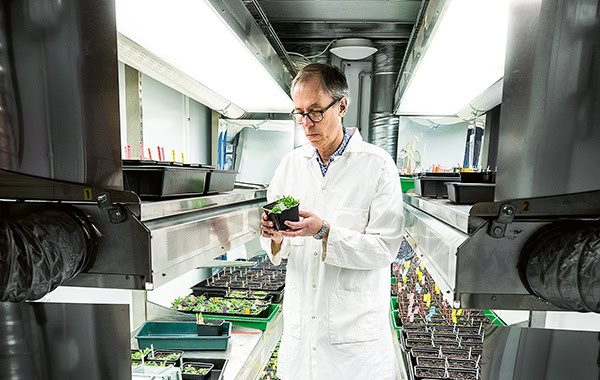
This is not impossible to achieve – but what do we do if someone actively tries to destroy Sweden’s food production system? That question is the main focus of the new Food Defence Research Centre led by the Swedish Defence Research Agency, FOI. Professor Anders Kvarnheden from the Uppsala BioCenter at SLU’s Campus Ultuna is one of the participants. He has long been researching infectious agents, known as pathogens, that can cause disease in plants.
“There are conventions on biological and chemical weapons, but there is a danger that states, organisations or networks will not comply with them. Even if the risk is small, it is important to be prepared for it,” he says.
Kvarnheden shows us a Chinese lantern plant, which has mosaic-patterned leaves caused by a viral infection. Leaves are an indicator for detecting viruses, although this particular one is harmless because it has lost its ability to spread via insects. The closely related wheat dwarf virus, on the other hand, can cause major crop failure.
One of the tasks of this new centre will be to draw up an inventory of which plant and animal diseases may pose a threat, and also to model how the threats are impacted by a changing climate. Systems for detecting and reporting pests and diseases already exist, but they need to be improved.
Every week since 1965, radioactive fallout has been measured at a number of sites in Sweden using filters that capture what is moving in the air. Kvarnheden and his colleagues at the Food Defence Research Centre will investigate whether large-scale DNA analysis of these filters can be used to also detect biological hazards to the food system.
“Preliminary studies by FOI show that it works well,” he says.
A few floors down, in the basement of Uppsala BioCenter, diseased plants are being grown to provide knowledge about the problems as well as the solutions. The dress code is white lab coat and blue shoe covers.
A master’s student sits hunched over a tobacco plant whose leaves darken when he injects it with a fungal protein. If the leaves then remain green, it means that the fungal protein is interacting with the plant’s own protein. If they turn yellow, no interaction has occurred.
“It is a biocontrol,” Kvarnheden explains. “These fungi can strengthen and stimulate the plant’s immune system so that it can defend itself better.”
When a contagion is detected, it can be difficult to prove whether it was spread unintentionally or not, and in a hybrid war, creating uncertainty can be an end in itself.
“Disinformation telling people that you have spread something can be enough to cause problems. Disinformation can also influence the course of a real event, so it is important that we are prepared for that aspect as well,” he says.
The Food Defence Research Centre plans to draw lessons from the war in Ukraine. “Agriculture has been very badly affected,” says Kvarnheden. “The direct impact we see is that Russia is firing on ships exporting crops and wheat, that there are floods because they have blown up dams and that fields have been mined. Indirectly, there is also enormous environmental damage caused by the war.”
He has two main hopes for the centre’s research:
“To learn more about the threats that exist and to be better prepared.”
Nine centres for the future of food
The centres have received funding from Formas within the framework of Sweden’s national food strategy. They are interdisciplinary and collaborate with actors from all parts of society.
2025-2028
AgroDrive – led by RISE, it will contribute to a fossil-free food production chain that functions even during a crisis.
Food Defence Research Centre – led by FOI, it aims to improve the capacity to prevent, detect and respond to attacks on the food production system.
FORCE, the Centre for Food Resilience and Competitiveness – led by Lund University, it aims to increase the production of innovative foodstuffs made from Swedish beans.
PLATE – a Swedish research centre for resilient meals led by the Stockholm Resilience Centre focused on creating meals that build preparedness and sustainability.
PLENTY – a centre for symbiotic and circular food supply led by the Royal Institute of Technology (KTH) to identify and better utilise waste and byproduct streams from the Swedish food production chain.
2021-2028
Blue Food – Centre for Future Seafood – led by KTH, it aims to harness the potential of producing nutritious food from Swedish waters.
PAN Sweden – led by Örebro University, it investigates the effects of plant-based proteins on individual health and promotes innovation in plant-based products.
SustAinimal – led by SLU, it aims to increase knowledge about the role of food-producing animals in the transition to a sustainable, resilient and profitable food system.
2021-2026
FINEST, Food Innovation for Sustainable System Transition – led by RISE.
